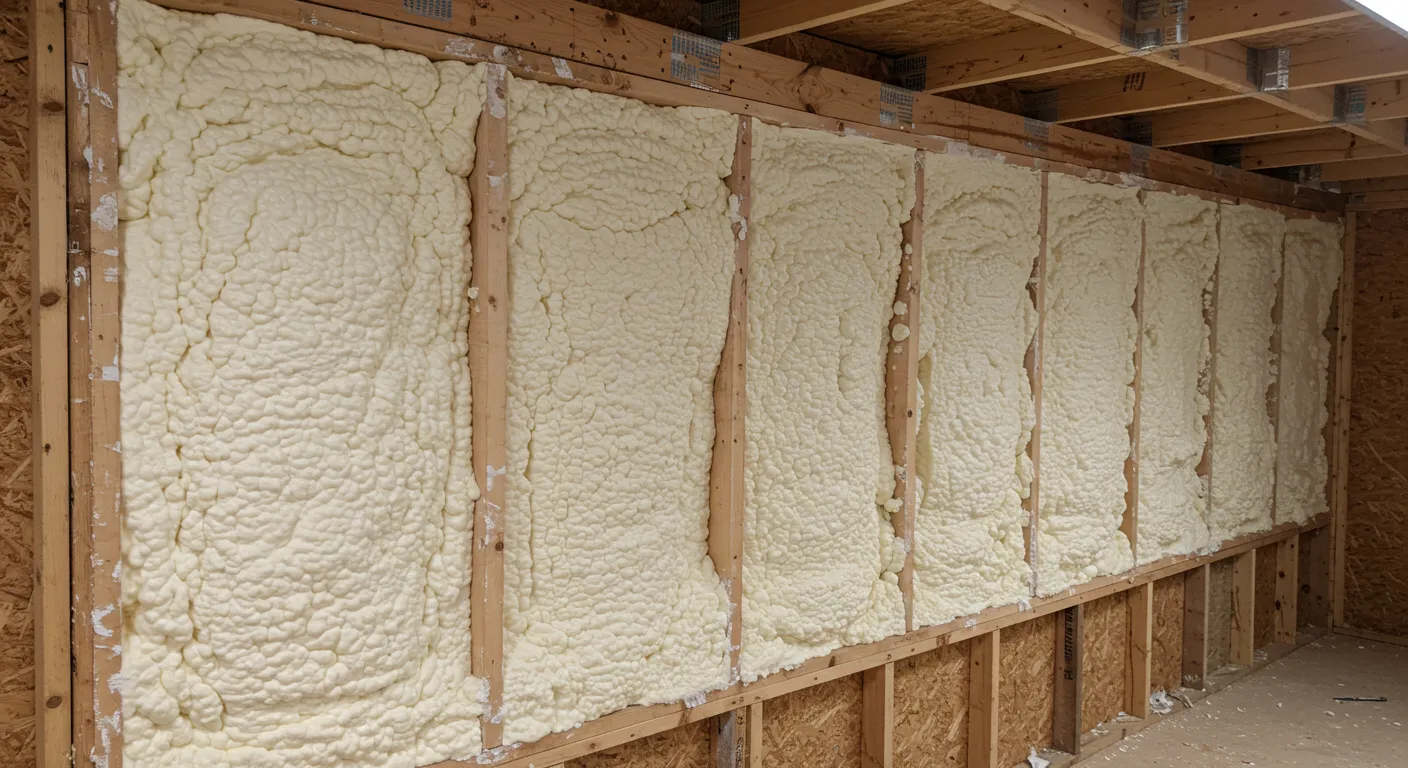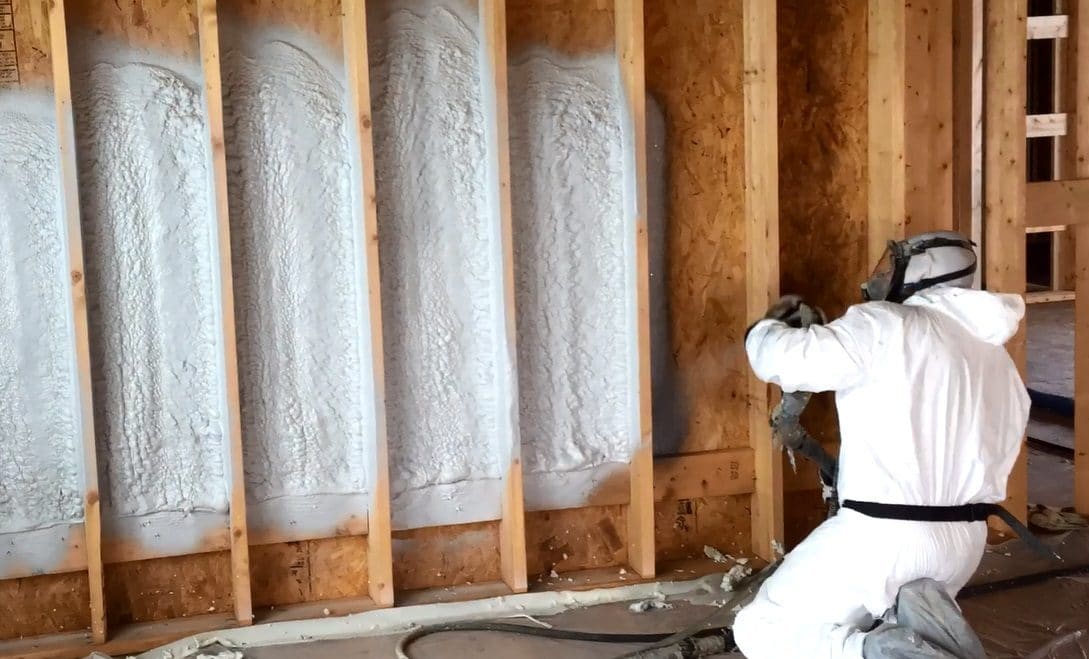Spray foam insulation provides thermal resistance and air sealing, but its effectiveness can diminish over time without proper protection. Applying the right coating is one of the most effective ways to shield spray foam from UV damage, moisture, and physical wear. This article explains how coatings extend spray foam life, which types to consider, and how to apply them correctly.
Whether you use spray foam for roofing, walls, or specialty applications, understanding protective coatings can add years to its performance. This article focuses on practical, technical strategies to protect and maintain spray foam in residential, commercial, and industrial environments.
How Coatings Protect Spray Foam from Damage
Spray foam is susceptible to degradation when exposed to UV rays, temperature fluctuations, and physical abrasion. Coatings create a barrier that preserves the foam's structure and insulating properties.
UV Resistance and Surface Protection
Ultraviolet radiation rapidly breaks down the outer layer of spray foam, leading to discoloration and cracking. Most coatings include UV inhibitors that significantly reduce this deterioration:
- Acrylic and silicone coatings offer high UV resistance
- Polyurea and polyurethane coatings form dense membranes that block sunlight
Protecting the foam from sunlight not only maintains thermal performance but also prevents premature material breakdown.
Waterproofing Capabilities
Spray foam is closed-cell in many cases, but it still benefits from a waterproof coating:
- Moisture can seep into microcracks if left uncoated
- Roofing foam is especially vulnerable to pooling water and rain
Coatings help keep the substrate dry, which reduces the risk of mold and structural moisture damage.

Physical Durability Enhancement
On roof systems or exposed surfaces, foam can wear from foot traffic, hail, or mechanical impact. The right coating improves surface toughness:
- Elastomeric coatings stretch and absorb stress
- Polyurea coatings resist puncture and abrasion
These qualities are essential in high-exposure environments.
Choosing the Right Coating for Spray Foam
The selection depends on the foam's location, exposure level, and maintenance capacity. Cost, application ease, and longevity also factor in.
Acrylic Coatings
Acrylics are water-based and relatively easy to apply. They're ideal for mild climates where high UV protection is the priority.
Pros:
- Cost-effective
- Highly reflective
- Easy to recoat
Cons:
- Limited moisture resistance
- May not hold up in ponding water conditions
Silicone Coatings
Silicone coatings excel in extreme UV exposure and heavy moisture conditions. They’re frequently used on foam roofs.
Pros:
- Outstanding UV protection
- Excellent waterproofing
- Resists ponding water
Cons:
- Slippery surface
- May require primer
Polyurea and Polyurethane Coatings
These form a hard, durable shell over spray foam. Suitable for industrial applications and areas requiring superior abrasion resistance.
Pros:
- High chemical and impact resistance
- Fast-curing
- Bonds well with foam
Cons:
- Requires specialized equipment
- Higher cost

Comparison Table: Spray Foam Coating Types
Application Best Practices
Applying the coating correctly is just as important as the material choice. Preparation, thickness, and conditions all affect performance.
Surface Preparation
Before coating, foam must be clean, dry, and free of oxidation or surface chalking.
- Remove dirt with gentle pressure washing
- Sand lightly if foam has UV degradation
- Allow full drying before applying any product
Correct Thickness and Coverage
Each product specifies a required dry film thickness (DFT) to perform correctly.
- Acrylics: 15-30 mils DFT
- Silicones: 20-35 mils DFT
- Polyurea: 40-60 mils DFT
Follow manufacturer guidelines for coverage rates per square foot.
Weather Considerations
Temperature, humidity, and wind all impact coating adhesion:
- Avoid application during rain or high humidity
- Ideal temps: 50°F to 90°F
- Calm wind conditions reduce overspray and inconsistencies
Recoating and Maintenance
Reapplying coatings every few years can extend the life of foam systems indefinitely. Routine checks help spot issues early.
Inspection Intervals
Conduct visual inspections at least once a year or after storms:
- Look for cracks, blisters, or thinning areas
- Clean debris or algae off the surface
When to Recoat
Most coating systems last 5 to 15 years before needing another layer:
- Acrylic: every 5-7 years
- Silicone: every 10-15 years
- Polyurea: may not require recoating unless damaged
Recoating is often faster and more cost-efficient than replacement.
Common Questions
How long does spray foam last with a coating?
Properly coated spray foam can last over 30 years. The coating acts as a protective shell, shielding the foam from UV, moisture, and physical wear, all of which contribute to long-term durability.
Can you coat old spray foam insulation?
Yes, but the surface must be inspected and cleaned thoroughly. If the foam has become chalky or brittle from UV exposure, light sanding and primer may be required before recoating.
What’s the best coating for spray foam roofs?
Silicone coatings are generally preferred for spray foam roofs due to their excellent resistance to ponding water and UV exposure. They form a seamless, waterproof barrier that holds up well over time.
How thick should the coating be?
Thickness depends on the type of coating. Most products recommend 20–40 mils dry film thickness. Using too little reduces effectiveness, while over-application can cause cracking or waste.
Conclusion
The right coating makes a substantial difference in how long spray foam insulation performs effectively. Whether used on a commercial flat roof or industrial tank, coatings protect against UV damage, moisture, and wear. Choosing between acrylic, silicone, and polyurea depends on climate, exposure level, and budget.
With proper application and periodic maintenance, coated spray foam systems can outlast many traditional insulation and roofing materials. Property owners can protect their investment for decades by understanding and following coating best practices.
FAQs
What happens if spray foam is left uncoated? Uncoated spray foam exposed to sunlight will degrade quickly. UV exposure causes surface oxidation, leading to cracks, chalking, and reduced insulation value.
Can I use elastomeric roof coating on spray foam? Yes. Elastomeric coatings are widely used for spray foam roofs. They provide flexibility, UV protection, and waterproofing, making them suitable for dynamic roof environments.
Is priming necessary before applying a coating? Some coatings require primer, especially on aged or weathered foam. Silicone coatings may need a bonding primer to ensure adhesion, depending on the substrate condition.
Can spray foam coating be a DIY project? Small-scale coating projects can be DIY, but commercial or roof applications benefit from professional handling due to safety, equipment needs, and consistent application requirements.
Does coating impact spray foam's R-value? The coating doesn’t improve R-value directly but protects the foam from UV and moisture, preserving its thermal performance over time.
Reviewer: Maria Lopez offered detailed feedback after reviewing this post. Her 10 years of experience in spray foam work helped guide the tone and suggestions toward realistic strategies.





.jpeg)
Comments